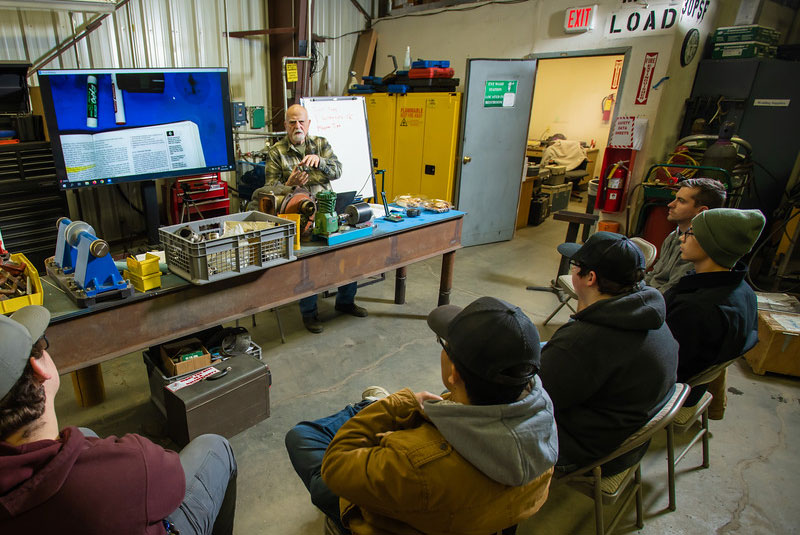Student Spotlight: Danielle Tryon – Mapping Alaska’s Marine Ecosystems Through Independent Research
by V. Heisser |
Meet Danielle Tryon, a dedicated environmental scientist passionate about Alaska’s
marine ecosystems. Danielle is originally from the Philadelphia area and holds degrees
in Ecology and Earth Environmental Sciences. She is a marine natural resources technician
student at Prince William Sound College (PWSC) in Valdez, Alaska.
Danielle’s journey north originally began on the Aleutian Peninsula, where she worked in fisheries for the Department of Fish and Game. These immersive, hands-on experiences fostered a profound appreciation for the state's natural beauty and sparked her curiosity about its unique coastal environments.
Today, Danielle is leading an independent research project focused on Prince William Sound—a region she knows through study and fieldwork. She utilizes Geographic Information Systems (GIS) and R statistical software to analyze environmental data, uncovering trends related to sea surface temperatures, climate change, and other critical indicators. Through her research, she aims to transform complex data into clear, meaningful insights that educators, policymakers, and local communities can use.
While her project isn't formally affiliated with any single organization, Danielle collaborates with the Prince William Sound Science Center to access critical environmental datasets—resources that are often difficult for the public to find or interpret. By translating this data into engaging visualizations and accessible narratives, she helps bridge the gap between scientific research and public understanding.
Outside of the lab, Danielle immerses herself in life in Valdez. She enjoys cross-country skiing, ice climbing, and engaging with the vibrant local community.
Her journey is far from over. Danielle was recently accepted into the master’s program in Fisheries at the University of Alaska Fairbanks, where she will continue her research in Soldotna on the Kenai Peninsula, further contributing to marine conservation and ecological understanding.
Danielle’s journey north originally began on the Aleutian Peninsula, where she worked in fisheries for the Department of Fish and Game. These immersive, hands-on experiences fostered a profound appreciation for the state's natural beauty and sparked her curiosity about its unique coastal environments.
Today, Danielle is leading an independent research project focused on Prince William Sound—a region she knows through study and fieldwork. She utilizes Geographic Information Systems (GIS) and R statistical software to analyze environmental data, uncovering trends related to sea surface temperatures, climate change, and other critical indicators. Through her research, she aims to transform complex data into clear, meaningful insights that educators, policymakers, and local communities can use.
While her project isn't formally affiliated with any single organization, Danielle collaborates with the Prince William Sound Science Center to access critical environmental datasets—resources that are often difficult for the public to find or interpret. By translating this data into engaging visualizations and accessible narratives, she helps bridge the gap between scientific research and public understanding.
Outside of the lab, Danielle immerses herself in life in Valdez. She enjoys cross-country skiing, ice climbing, and engaging with the vibrant local community.
Her journey is far from over. Danielle was recently accepted into the master’s program in Fisheries at the University of Alaska Fairbanks, where she will continue her research in Soldotna on the Kenai Peninsula, further contributing to marine conservation and ecological understanding.
Danielle expressed her gratitude to Danielle Verna, an adjunct faculty member at PWSC and fellow Pennsylvania native, for her exceptional mentorship in the MNRT program. Verna has provided invaluable guidance that has inspired Danielle and shaped her academic path.
Dedicated to research and science communication, Danielle Tryon aims to make environmental science more accessible and impactful, empowering others to engage with and protect Alaska’s unique ecosystems.









